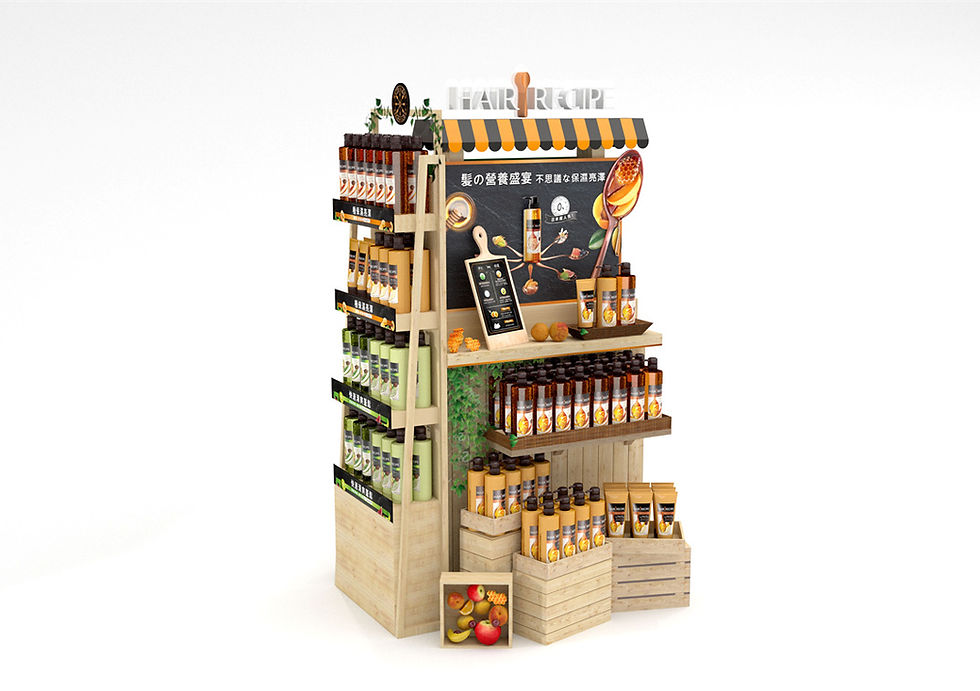Are you familiar with FMCG terms? 40 essential words that FMCG beginners must learn
- Paradise Design

- Dec 3, 2021
- 3 min read
Updated: Nov 21, 2023

There are hundreds of FMCG terms out there. If you're not sure what they mean, we've selected 40 FMCG terms to help you quickly become an insider.
10 commonly-used adjectives.
ATL (Above-the-line)
An advertising strategy using mass media such as television or magazine to reach a large audience. The focus is to attract consumers’ attention, build brand awareness, and establish goodwill.
Brand Equity
The value of a brand that makes it different from its competitors, including brand colors, style, elements, etc. It can also be described as "brand assets".
Brief
A common term used in the advertising and marketing field, usually refers to a set of instructions on creative design.
BTL (Below-the-line)
An advertising method that intends to build positive conversations with a target audience, e.g. POSM, social media advertising.
Claim, Tagline
A statement made in marketing about the benefits of a brand/product, e.g. 24-hour refreshment.
FMCG (Fast-Moving Consumer Goods)
Products that are sold quickly and at a relatively low price such as lotion, shampoo, soap, toothpaste and other household commodities.
KV (Key Visual)
The main visual design in marketing communication that sets the tone for the rest of the design items.
POSM (Point of Sale Materials)
Advertising materials in retail stores that are used to communicate product information and attract consumer purchases at the point of sale, for instance a hotspot, mass display, gondola end, etc.
POP (Point of Purchase)
Any visual materials displayed on the shelf in an effort to stimulate consumption desire and induce a purchasing decision, such as a wobbler, marketing sticker, divider, or shelf talker.
RTB (Reason to believe)
Information provided by the brand to persuade consumers to believe in the efficacy of the product, i.e. ingredients, technology.
Other 30 special terms
AE (Account Executive)
Job title for contact person in advertising, design, manufacturing and other agencies.
Align
A mutual agreement between client and vendor.
Agenda
Often appears on the first page of the presentation or proposal to briefly cover the contents and objectives of the meeting.
CIS
CIS stands for Corporate Identity System, which refers to specific use of standard font, logo and other visuals to establish the overall corporate identity that distinguishes it from other brands.
Con-call (conference call)
A telephone call that involves three or more people.
Combo
A package of different products wrapped and sold together.
Deadline
The deadline for submission of projects, designs, and production.
Disclaimer
A statement designed to clarify the message (claim/body text) and limit legal liability. A symbol (e.g. asterisk) will be placed at the end of the message to point to the disclaimer.
e.g. Claim: 24-hour refreshment* Disclaimer: *Effectiveness compared to other products of this brand.
Deck
Commonly known as Slides, usually refers to PowerPoint presentation slides. i.e. sales presentation deck.
Focus group
A form of market research in which 6 to 8 people are selected from the target market (by age, gender, etc) for in-depth interviews to obtain consumers’ perceptions of the product or marketing activity.
Feedback
The overall opinion and suggestion provided by the client about your work.
Hyper
It refers to hypermarkets including Carrefour, Amart, RT-Mart, and etc
Kick off
The launch of a product, marketing project, or event. i.e. kick-off meeting
KA (Key Account)
A term used by FMCG marketers and retailers to imply retail stores such as Watsons, Cosmed and Mannings.
KOL (Key Opinion Leader)
A person who has an influence on social media in terms of their opinions in respective fields.
Launch
The start of an event or commercial sale of a product.
Layout
The arrangement of the elements on a design.
NPD (New Product Development)
The marketed products can often be categorized into either a re-launch of existing products and introduction of a new product (NPD).
OOH (Out-of-home)
A form of advertising that can be found outside of the home, which includes billboard, bus and train wraps, station advertising with lightbox, and more.
Package
Generally refers to containers and materials used to protect products and cultivate customer buy-in.
PO (Purchase order)
A legally binding document issued by the client when placing an order with a vendor.
POG (Planogram)
A drawing or diagram that shows the placement of retail products on a shelf.
Pop-up store
A non-permanent store that creates buzz and communicates the brand image with consumers in a short time.
QC
A set of procedures to ensure that product quality is fulfilled.
Quarter
A three-month period companies use to define the length of a marketing or advertising campaign and is typically expressed as Q1, Q2, Q3, Q4.
Quotation
A document that a vendor proposes to a potential client with the estimated cost for its goods and services.
Recap
A summary of the main topics that is usually presented at the end of a meeting.
SKU (Stock Keeping Unit)
A specific product from a range of products of a brand. For example, deep moisturizing shampoo is 1 SKU, deep moisturizing shampoo plus smooth shampoo are 2 SKU.
TA (target audience)
The specific group of consumers to which a product or a marketing campaign is aimed. They are distinguished by age, gender, interest and other personal characteristics.
Vendor
Companies that provide a product or service in the marketplace.





Comments